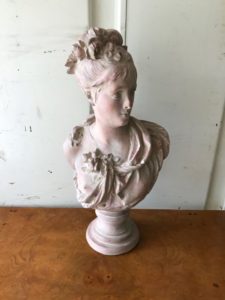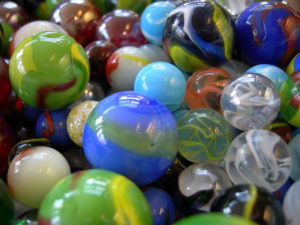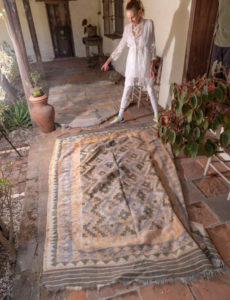 Last week I met with a bank representative in charge of major collections of art about the options that collection offers the connoisseur in regard to financial planning. We call this new area of banking ‘Art Services,’ a growing field offered by high profile bankers. Today you can borrow on your collections. Collectors often plan in advance for heirs. I needed to know HOW. This brought up the discussion of WHAT makes a collection? And what makes a good collector? Finally, we discussed what makes a connoisseur? We indeed agreed on a distinction between collectors and connoisseurs.
Last week I met with a bank representative in charge of major collections of art about the options that collection offers the connoisseur in regard to financial planning. We call this new area of banking ‘Art Services,’ a growing field offered by high profile bankers. Today you can borrow on your collections. Collectors often plan in advance for heirs. I needed to know HOW. This brought up the discussion of WHAT makes a collection? And what makes a good collector? Finally, we discussed what makes a connoisseur? We indeed agreed on a distinction between collectors and connoisseurs.
Both the banker and I have known great collectors and connoisseurs. I consider one of the great pleasures of my job learning the mindset of great collectors, how they strategize their collections, both in terms of financial planning, and in terms of building their collections.
Now let me distinguish the art of connoisseurship from the act of collecting.
I can describe the symptoms of becoming a connoisseur, although I can’t describe the ‘pathology.’ Simply, I recognize a connoisseur when they start to sell everything NOT A) in their area of interest and B) not the best example of their area of interest.
Let me give you an example:
 One of my clients collects glass marbles (Really!). He’s perfected his collection over the years, selling the lesser quality marbles, retaining the best examples. What he mistakenly purchased, he sells over time, and learns from his mistakes. What he ‘gets lucky’ in acquiring often becomes tomorrow’s sale to another colleague. He constantly refines his area of expertise.
One of my clients collects glass marbles (Really!). He’s perfected his collection over the years, selling the lesser quality marbles, retaining the best examples. What he mistakenly purchased, he sells over time, and learns from his mistakes. What he ‘gets lucky’ in acquiring often becomes tomorrow’s sale to another colleague. He constantly refines his area of expertise.
You might say, “That’s easy.” But think about the knowledge base this marble collector stores under his belt. He must know about:
- the history of children’s toys
- games in the early 19th century when the game of marbles became popular
- the chemical composition of glass
- glass blowing
- the heat required to make a perfect marble
- the areas of this country that produced the sand needed to make the marbles
- the economic history of eras that could afford to buy toys for children.
- Physics that tell him when a chip in the sphere is NOT right
- locations of major factories that made marbles
- how much they cost over the eras
- the gender issues around certain games and toys through the eras
- chemicals used to make glass colors
Just to make your head spin, he also recognizes today’s market for marbles: what makes a ‘cat’s eye’ valuable, what sizes to watch out for, and he knows his competition. He understands today’s market technologies, and rarely uses eBay, too common a market for his special interest.
 This narrow area of expertise allows him to branch out into economic history, social history, children’s history, labor history, the growth of factories and industrialization, unions, and artisans with the industry. And he comprehends economics!
This narrow area of expertise allows him to branch out into economic history, social history, children’s history, labor history, the growth of factories and industrialization, unions, and artisans with the industry. And he comprehends economics!
He tends his collection by weeding out mistakes, duplicates, lesser quality items, and adds only the best. His library is extensive.
When I spoke with the banker expert in Art Services, we laughed about the obsessive interest some clients take in a narrow field in the art and collectible world. In reality the act of collecting on the connoisseurship level is the act of control and organization of a whole WORLD. It becomes a way to ‘frame’ the experience of living in a material world, a response to the the human need to categorize that experience.
I understand that not everyone possesses this level of commitment. But when I see it, I know it, and crown the collector with the crown of connoisseurship. The concept is not about the money, it’s about the drive some of us hold to structure our lived experience.